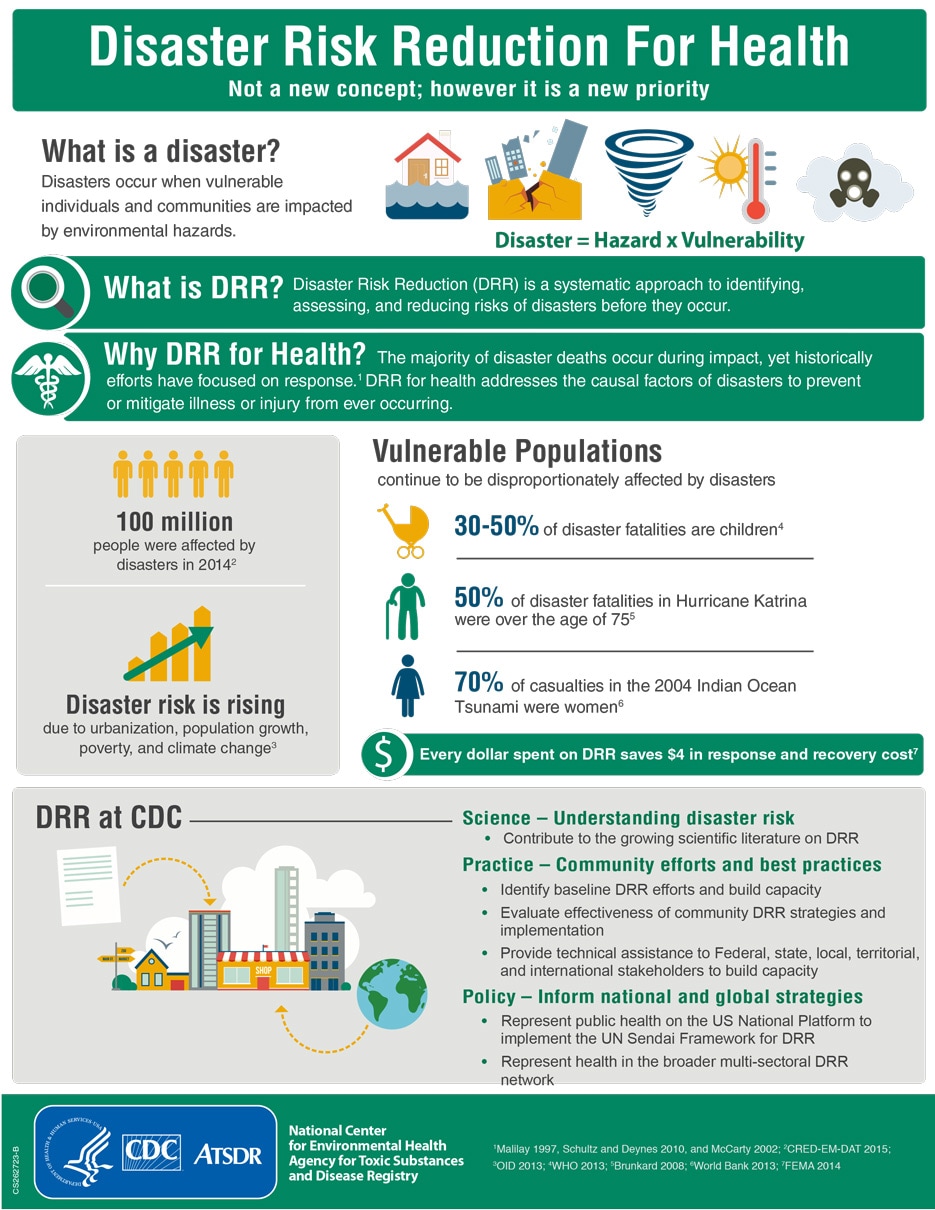Infographic: Disaster Risk Reduction For Health
Download Infographic PDF: English [PDF – 2 MB] | Español [PDF – 354 KB]

Disaster Risk Reduction For Health
Not a new concept; however it is a new priority
What is a disaster?
- Disasters occur when vulnerable individuals and communities are impacted by environmental hazards.
- Disaster = Hazard x Vulnerability
What is DRR?
Disaster Risk Reduction (DRR) is a systematic approach to identifying, assessing, and reducing risks of disasters before they occur.
Why DRR for Health?
The majority of disaster deaths occur during impact, yet historically efforts have focused on response.1 DRR for health addresses the causal factors of disasters to prevent or mitigate illness or injury from ever occurring.
- 100 million people were affected by disasters in 20142
- Disaster risk is rising due to urbanization, population growth, poverty, and climate change3
- Vulnerable Populations continue to be disproportionately affected by disasters
- 30-50% of disaster fatalities are children4
- 50% of disaster fatalities in Hurricane Katrina were over the age of 755
- 70% of casualties in the 2004 Indian Ocean Tsunami were women6
- Every dollar spent on DRR saves $4 in response and recovery cost
DDR at CDC
- Science – Understanding disaster risk
- Contribute to the growing scientific literature on DRR
- Practice – Community efforts and best practices
- Identify baseline DRR efforts and build capacity
- Evaluate effectiveness of community DRR strategies and implementation
- Provide technical assistance to Federal, state, local, territorial, and international stakeholders to build capacity
- Policy – Inform national and global strategies
- Represent public health on the US National Platform to implement the UN Sendai Framework for DRR
- Represent health in the broader multi-sectoral DRR network
References
1 Malilay 1997, Schultz and Deynes 2010, and McCarty 2002
2 CRED-EM-DAT 2015
3 OID 2013
4 WHO 2013
5 Brunkard 2008
6 World Bank 2013
7 FEMA 2014